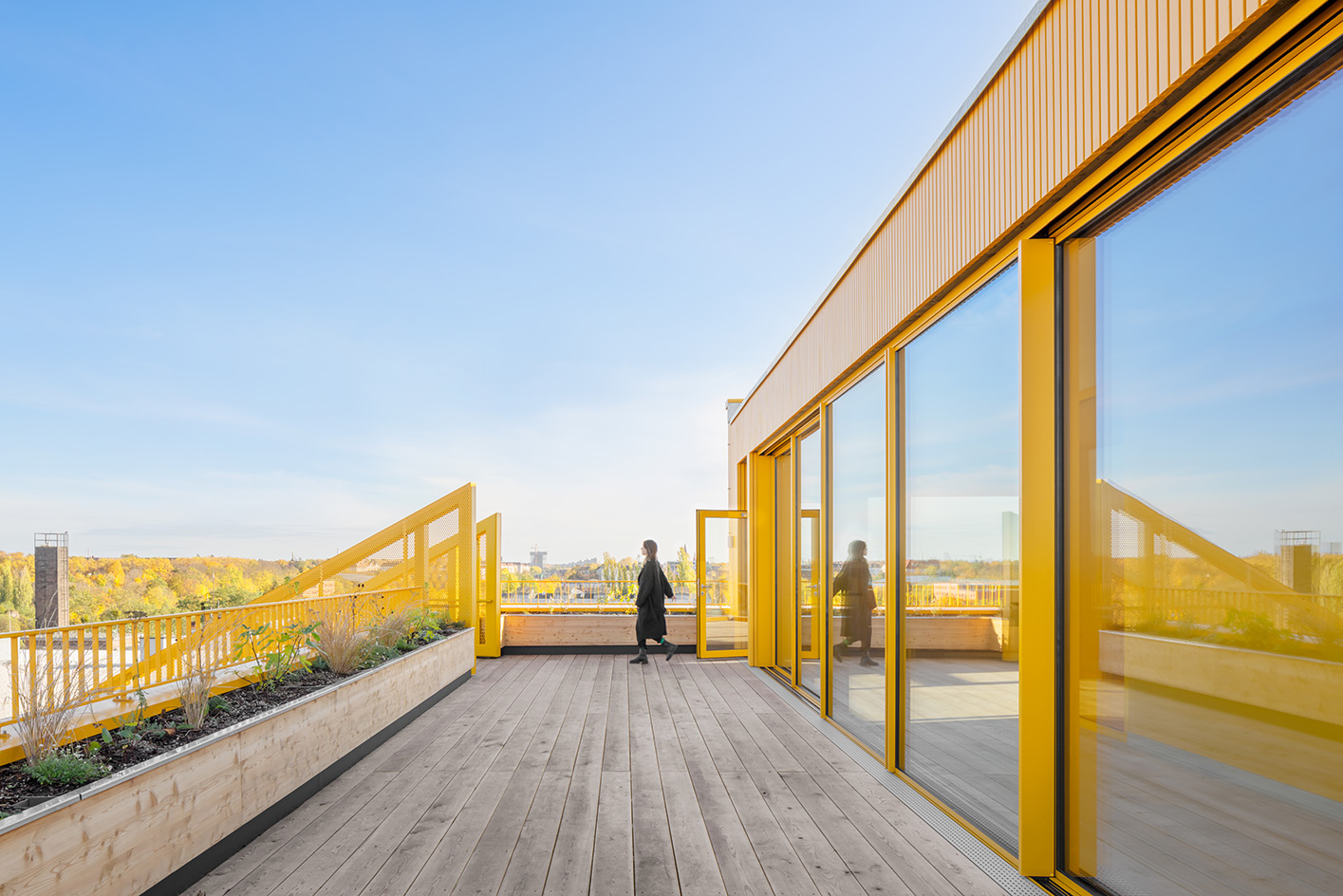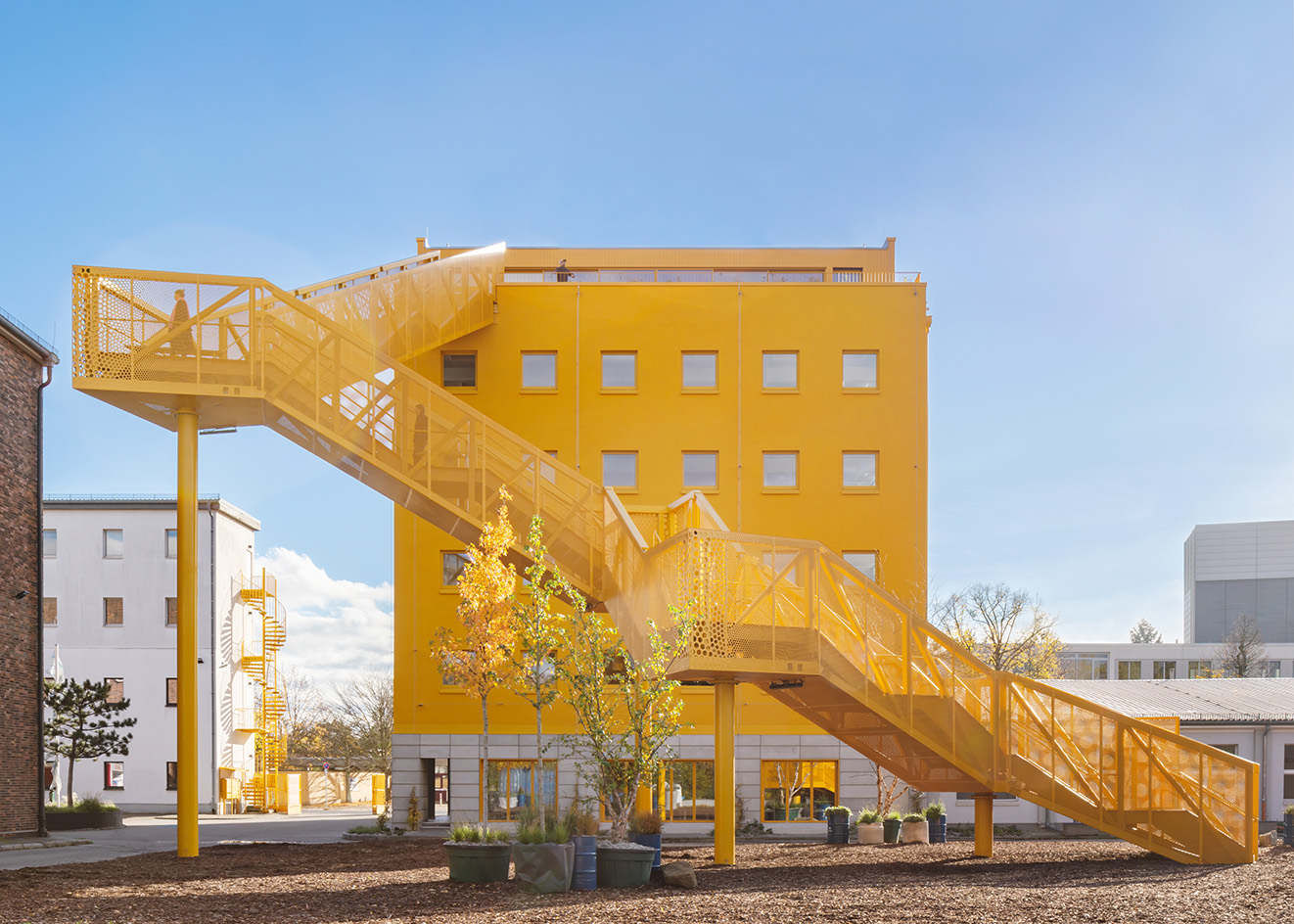
Atelier Gardens, a six-acre creative film and community impact campus in Berlin, has welcomed the opening of the bright yellow ‘Haus 1’, an inventively and sustainably refurbished 1990s office building. Haus 1 is a new central hub for the campus, and was an important site for German film, TV and even propaganda since the early 20th century, located just south of Tempelhof Field.
The five-storey building hosts a concierge, a cafe, office space, and a daylight-filled rooftop events venue with skyline views. It also features a dynamic 57m-long yellow ‘stair-scape’ that channels rainwater for re-use in the gardens and toilets – vital functions that are all strategic to growing the environmentally and socially sustainable campus vision of London-based developer and operator Fabrix, which took stewardship in 2020.
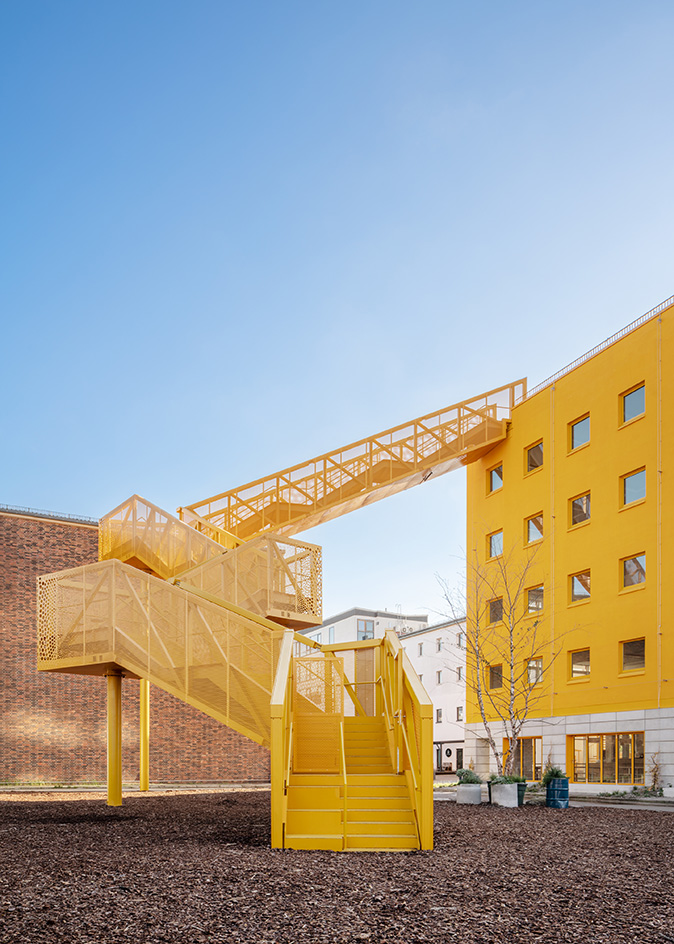
HAUS 1: a key part of MVRDV's Atelier Gardens masterplan
The adaptive re-use and eco-friendly interior design of the building is part of Dutch architects MVRDV’s masterplan to transform the previously tired industrial site into a playful, colourful village that champions circularity by design. MVRDV architect Klaas Hofman saw a lot of potential in the group of 'introvert' yet 'diverse' buildings, ranging from a 1934 heritage-protected studio warehouse to boxy late 20th century office blocks. Despite varying quality, they vowed to demolish nothing, instead creating community and identity through renovations, landscaping, bold colours and way-finding.
Today, a cross-disciplinary community buzzes between the five film studios, 11 dubbing studios and 140 workspaces. It’s not uncommon to see Brad Pitt or Taika Waititi grabbing a coffee and sets being built for Amazon or Netflix. Yet alongside this quite transient activity, you’ll find social and environmental activists turning up for work everyday; such as Extinction Rebellion and Greta Thunberg’s Fridays for Future amongst others. Haus 1 is a key anchor for this latter activity, now offering larger workspaces with newly opened up floor plans, bio-based insulation, solar shading and the CLT rooftop extension, all led together with local architects Hirschmüller Schindele Architekten.
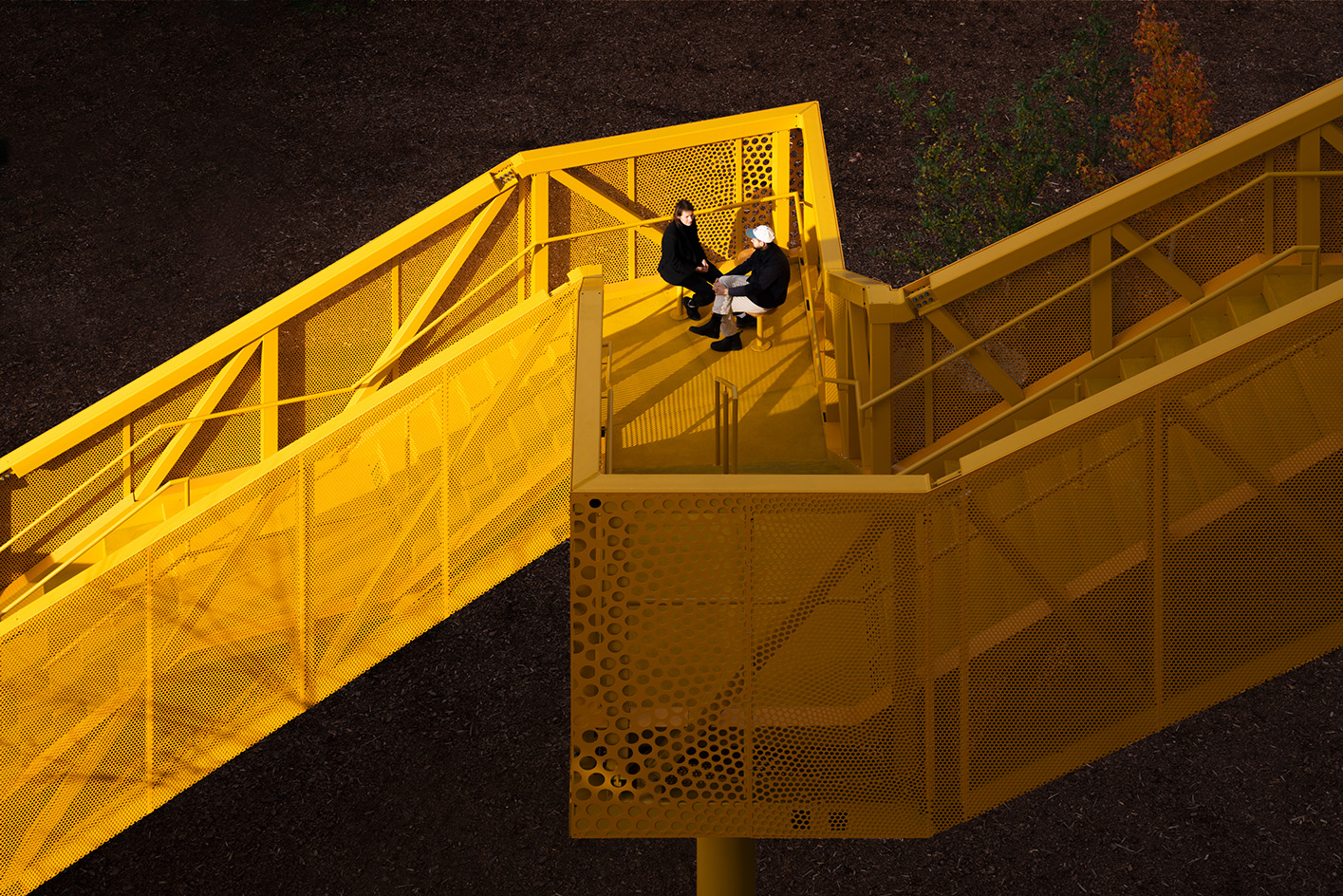
Across the campus, landscape design by London-based Harris Bugg Studio supports Atelier Gardens’ circular vision. Waste concrete from the building was re-used or crushed into a soil aggregate for water retention, weed suppression and improved habitat diversity – all resulting in 300 tonnes of material prevented from landfill to date, and more to come.
It’s very much a 'working site' says landscape designer Charlotte Harris, who has begun a 'radical re-greening' with tough pioneering and nitrogen-fixing plants. She started with six trees, now there are 57, with a total of 180 planned. It’s her long-term goal to eventually forge a green corridor with Tempelhof Field; all while improving soil health with composting initiatives run by the zero-waste restaurant Roots Radical; and creating hospitable natural spaces for wellbeing.
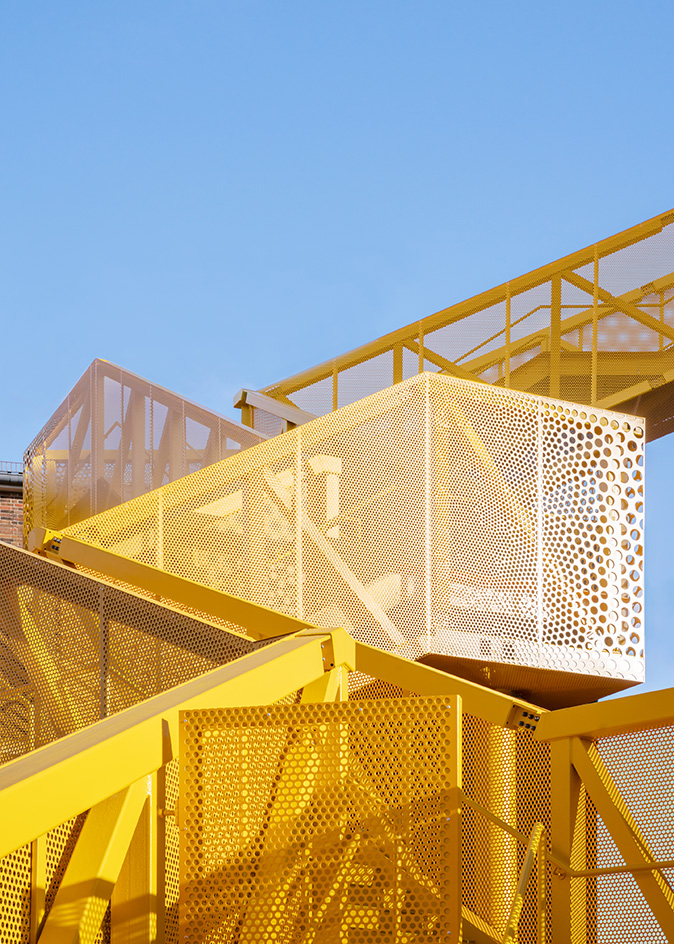
At MVRDV, Hofman has been working on adaptive re-use for decades, such as on the Lloyd Hotel in Amsterdam (2004), and has recognised a shift in how people receive it, specially with former industrial buildings. 'Today people really appreciate open-ended industrial spaces, yet it’s important to bring an identity to them.'
Colour, he explains, is a key tool: 'By using bright colours we can bring industrial buildings into the foreground, instead of making them disappear. It’s much more interesting and we can celebrate the building once again.' He also wrapped a colourful (this time, red) staircase around the MVRDV-designed, new yet industrially-inspired and fully demountable Portlantis Harbour Experience Centre in Rotterdam (opening 2024).
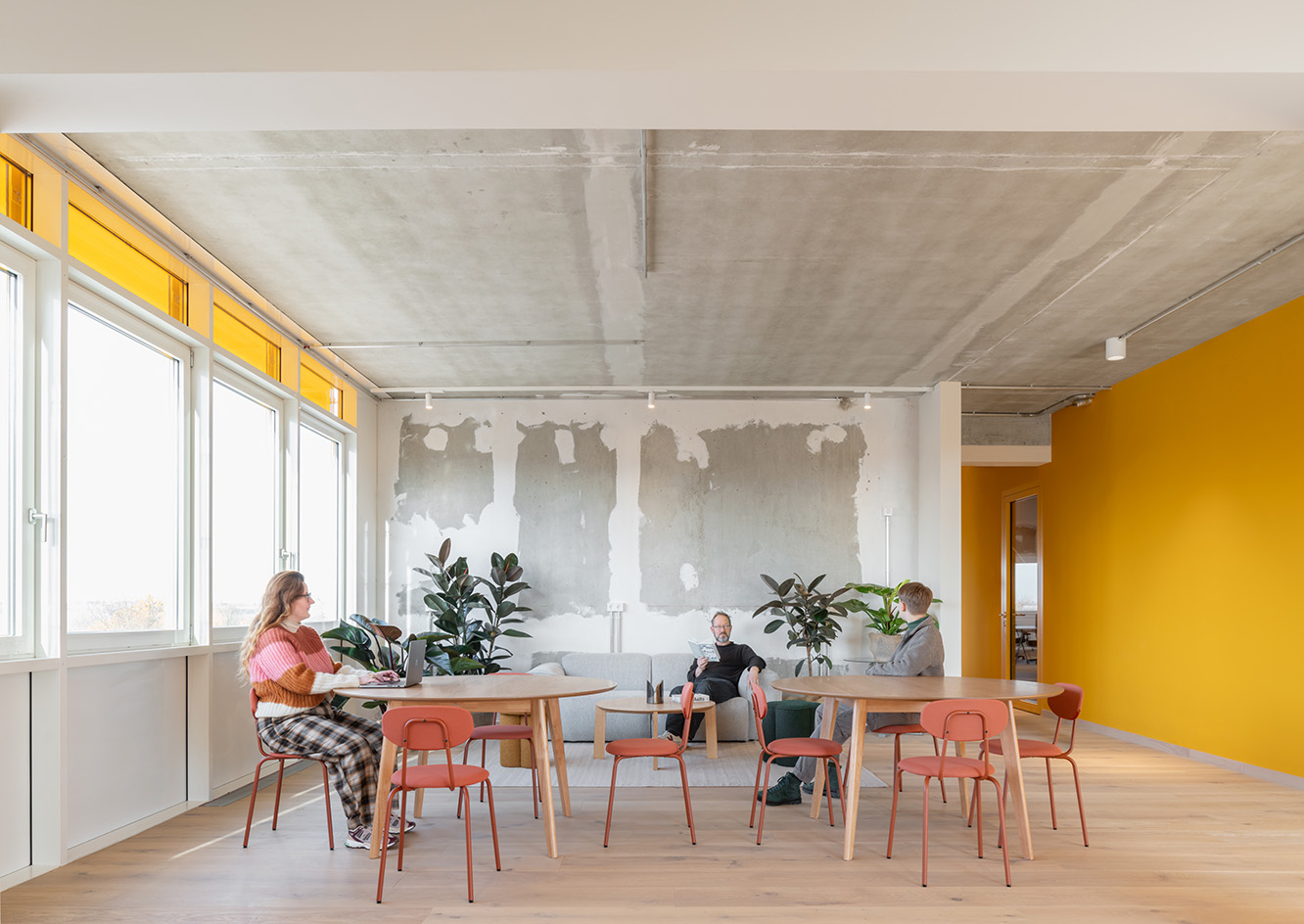
Atelier Gardens will continue to unfold without a specified end point. 'It’s an evolving masterplan guided by the principles of sustainability and re-use,' says Hofman. 'Each mile stone is a stepping stone, attracting different users, with the landscape forming around it into a natural environment.'
While Haus 1 plays a key part in bringing more businesses to the campus, its bright yellow colour and dynamic ‘stair-scape’ importantly marks Atelier Gardens as a place of optimism: 'It’s a colour that says “there’s something happening here!” and that all urban buildings have potential,' says Hofman.
